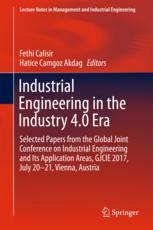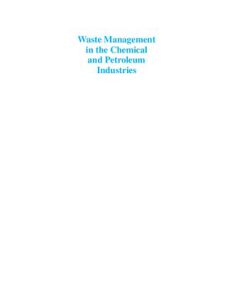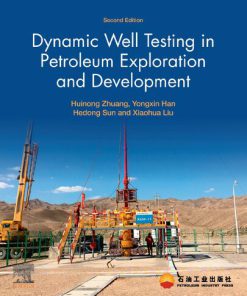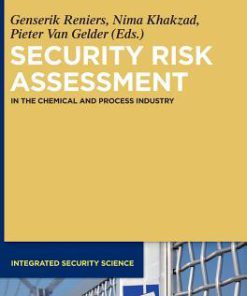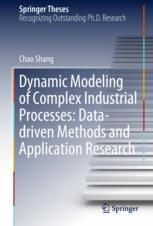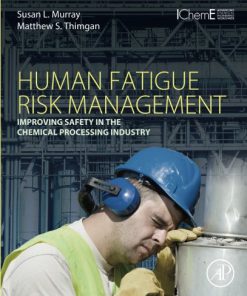Dynamic Risk Analysis in the Chemical and Petroleum Industry Evolution and Interaction with Parallel Disciplines in the Perspective of Industrial Application 1st Edition by Nicola Paltrinieri, Faisal Khan 0128037652 9780128037652
$50.00 Original price was: $50.00.$25.00Current price is: $25.00.
Dynamic Risk Analysis in the Chemical and Petroleum Industry Evolution and Interaction with Parallel Disciplines in the Perspective of Industrial Application 1st Edition by Nicola Paltrinieri, Faisal Khan – Ebook PDF Instant Download/DeliveryISBN: 0128037652, 9780128037652
Full download Dynamic Risk Analysis in the Chemical and Petroleum Industry Evolution and Interaction with Parallel Disciplines in the Perspective of Industrial Application 1st Edition after payment.
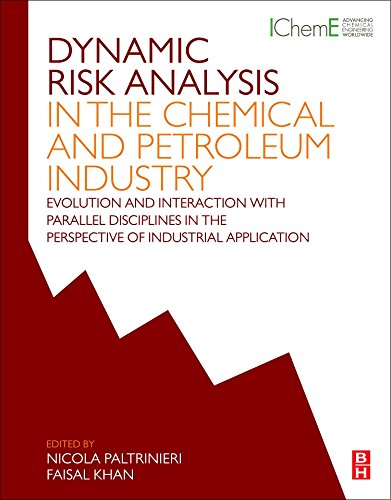
Product details:
ISBN-10 : 0128037652
ISBN-13 : 9780128037652
Author: Nicola Paltrinieri, Faisal Khan
Paltrinieri and Khan provide support for professionals who plan to improve risk analysis by introducing innovative techniques and exploiting the potential of data share and process technologies. This concrete reference within an ever-growing variety of innovations will be most helpful to process safety managers, HSE managers, safety engineers and safety engineering students.
This book is divided into four parts. The Introduction provides an overview of the state-of-the-art risk analysis methods and the most up-to-date popular definitions of accident scenarios. The second section on Dynamic Risk Analysis shows the dynamic evolution of risk analysis and covers Hazard Identification, Frequency Analysis, Consequence Analysis and Establishing the Risk Picture. The third section on Interaction with Parallel Disciplines illustrates the interaction between risk analysis and other disciplines from parallel fields, such as the nuclear, the economic and the financial sectors. The final section on Dynamic Risk Management addresses risk management, which may dynamically learn from itself and improve in a spiral process leading to a resilient system.
Dynamic Risk Analysis in the Chemical and Petroleum Industry Evolution and Interaction with Parallel Disciplines in the Perspective of Industrial Application 1st Table of contents:
Part 1. Introduction
Chapter 1. A Short Overview of Risk Analysis Background and Recent Developments
1. Introduction
2. Fundamentals of Risk Analysis
3. Way Forward: Dynamic Risk Assessment Approaches
4. Conclusions
Chapter 2. New Definitions of Old Issues and Need for Continuous Improvement
1. Introduction
2. Atypical Accident Scenarios
3. Black Swans
4. Dragon Kings
5. Small Things
6. Conclusions
Part 2. Dynamic Risk Analysis
Section 2.1. Hazard Identification
Chapter 3. Advanced Technique for Dynamic Hazard Identification
1. Introduction
2. A Framework for the Identification of Atypical Scenarios
3. State of the Art
4. Dynamic Procedure for Atypical Scenarios Identification
5. Conclusions
Chapter 4. Dynamic Hazard Identification: Tutorial and Examples
1. Introduction
2. Methodology Tutorial
3. Application of the Approach
4. Conclusions
Section 2.2. Analysis of Initiating Events
Chapter 5. Reactive Approaches of Probability Update Based on Bayesian Methods
1. Introduction
2. Bayesian Inference
3. Bayesian Network
4. Limited Memory Influence Diagram
5. Conclusions
Chapter 6. Proactive Approaches of Dynamic Risk Assessment Based on Indicators
1. Introduction
2. Proactive and Dynamic Features
3. Techniques for Development of Indicators
4. Techniques for Frequency Modification
5. The Risk Barometer Technique
6. Conclusions
Chapter 7. Reactive and Proactive Approaches: Tutorials and Example
1. Introduction
2. Methodology Tutorial
3. Application of Reactive and Proactive Approaches
4. Conclusions
Chapter 8. Comparison and Complementarity between Reactive and Proactive Approaches
1. Introduction
2. Benefits and Limitations of Reactive and Proactive Approaches
3. Comparison and Complementarity of the Two Techniques
4. Conclusions
Section 2.3. Analysis of Consequences
Chapter 9. Dynamic Consequence Analysis through Computational Fluid Dynamics Modeling
1. Introduction
2. Implementation of Computational Fluid Dynamics Modeling into Dynamic Risk Assessment
3. Computational Fluid Dynamic Models for Specific Accidental Scenarios
4. Conclusions
Chapter 10. Computational Fluid Dynamics Modeling: Tutorial and Examples
1. Introduction
2. Methodology Tutorial
3. Application of the Approach
4. Conclusions
Chapter 11. Assessing the Severity of Runaway Reactions
1. Introduction
2. Safety Measures for Runaway Reactions
3. Analysis of Risks Related to Runaway Reactions
4. Dynamic Method
5. Conclusions
Chapter 12. Dynamic Assessment of Runaway Reaction Risk: Tutorial and Examples
1. Introduction
2. Methodology Tutorial
3. Results
4. Discussion
5. Conclusions
Section 2.4. Establishing the Risk Picture
Chapter 13. Risk Metrics and Dynamic Risk Visualization
1. Introduction
2. Traditional Risk Metrics
3. Dynamic Risk Visualization
4. Conclusions
Part 3. Interaction With Parallel Disciplines
Section 3.1. Humans
Chapter 14. Human Reliability Analysis: From the Nuclear to the Petroleum Sector
1. Introduction
2. Basic Concepts
3. Review of Selected Human Reliability Analysis Methods
4. Human Reliability Analysis Application in the Petroleum Sector
5. Conclusions
Chapter 15. Human Reliability Analysis in the Petroleum Industry: Tutorial and Examples
1. Introduction
2. Methodology Tutorial
3. Application of SPAR-H
4. Conclusions
Section 3.2. Costs and Benefits
Chapter 16. Cost-Benefit Analysis of Safety Measures
1. Introduction
2. The Foundations of Cost-Benefit Analysis
3. Prevention Costs
4. Hypothetical Benefits: Categories of Avoided Accident Costs
5. Cost-Benefit Analysis
6. Conclusions
Chapter 17. Cost-Benefit Analysis for Low-Probability, High-Impact Risks: Tutorials and Examples
1. Introduction
2. Cost-Benefit Analysis Based on the Disproportion Factor
3. Cost-Benefit Analysis Based on Multicriteria Decision-Making
4. Conclusions
Section 3.3. Reputation
Chapter 18. Reputational Damage After Major Accidents
1. Introduction
2. Theoretical Background
3. Estimating the Cost of Reputational Damage
4. Conclusions
Chapter 19. Estimation of Reputational Damage from Major Accidents: Tutorial and Examples
1. Introduction
2. Methodology Tutorial
3. Application of the Approach
4. Conclusions
Part 4. Dynamic Risk Management
Chapter 20. Dynamic Risk Management in the Perspective of a Resilient System
1. Introduction
2. Background: Complexity and the Notion of Hidden, Dynamic, and Emergent Risks
3. State of the Art
4. The SoS Proxy Approach
5. Conclusions
People also search for Dynamic Risk Analysis in the Chemical and Petroleum Industry Evolution and Interaction with Parallel Disciplines in the Perspective of Industrial Application 1st:
dynamic risk analysis in the chemical and petroleum industry
chemicals used in petroleum industry
what is chemical risk
dynamic risk company
dynamic risk
Tags: Risk Analysis, the Chemical, Petroleum Industry, Evolution, Nicola Paltrinieri, Faisal Khan
You may also like…
Engineering
Waste management in the chemical and petroleum industries Second Edition. Edition Alireza Bahadori
Engineering
Dynamic Well Testing in Petroleum Exploration and Development 2nd Edition Huinong Zhuang
Science (General)
Science (General)
The Interaction of Food Industry and Environment 1st Edition Charis M. Galanakis (Editor)
Business & Economics




